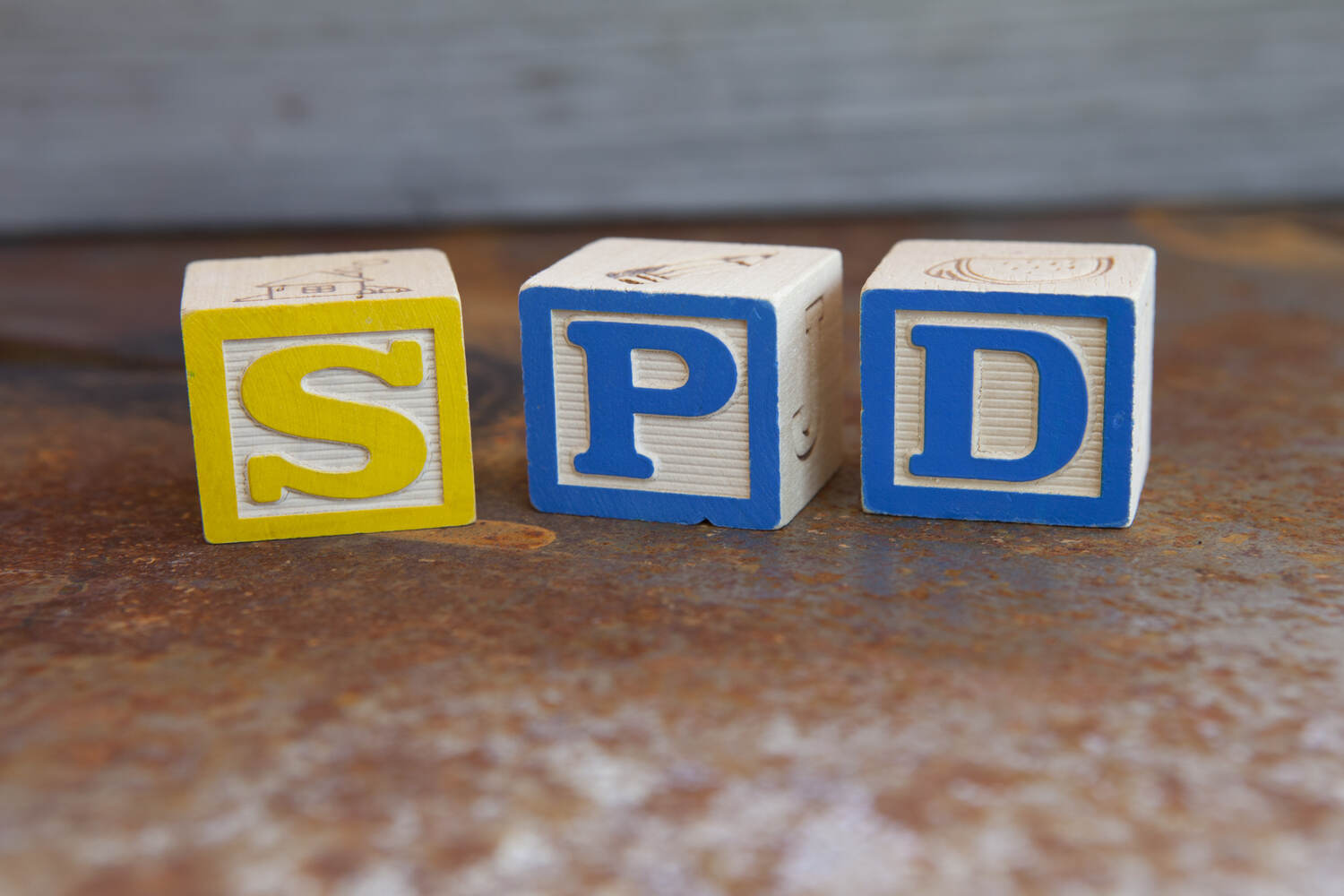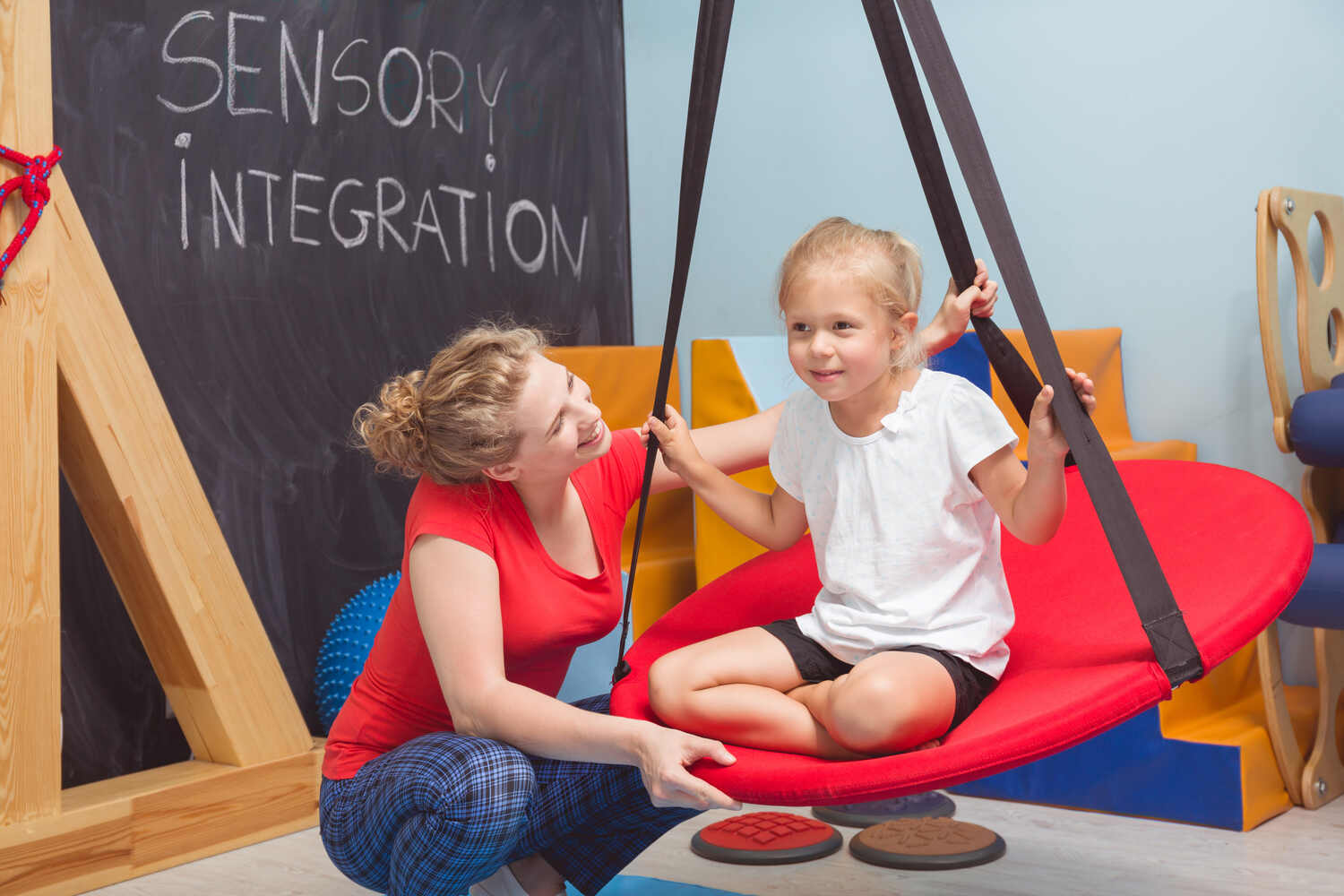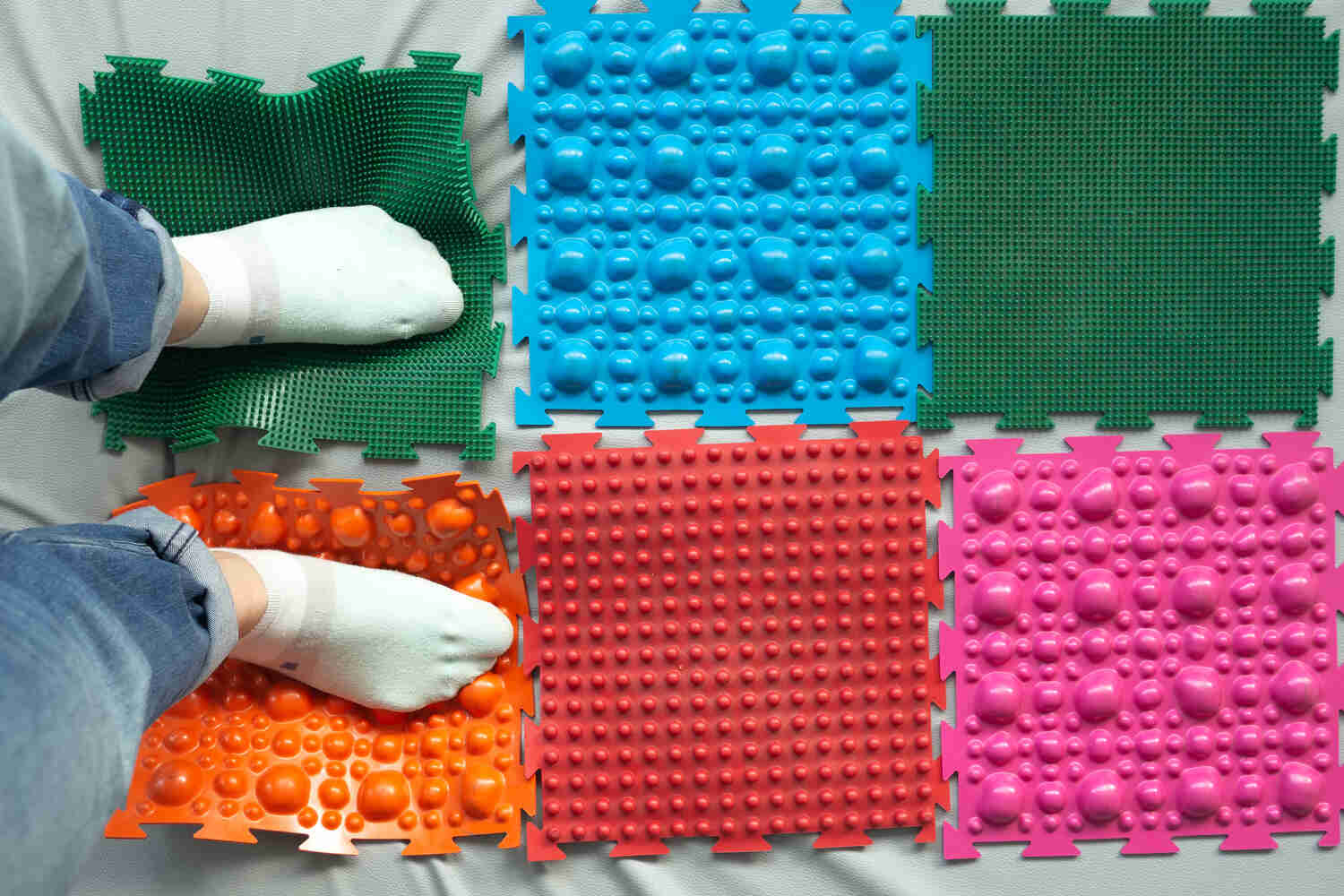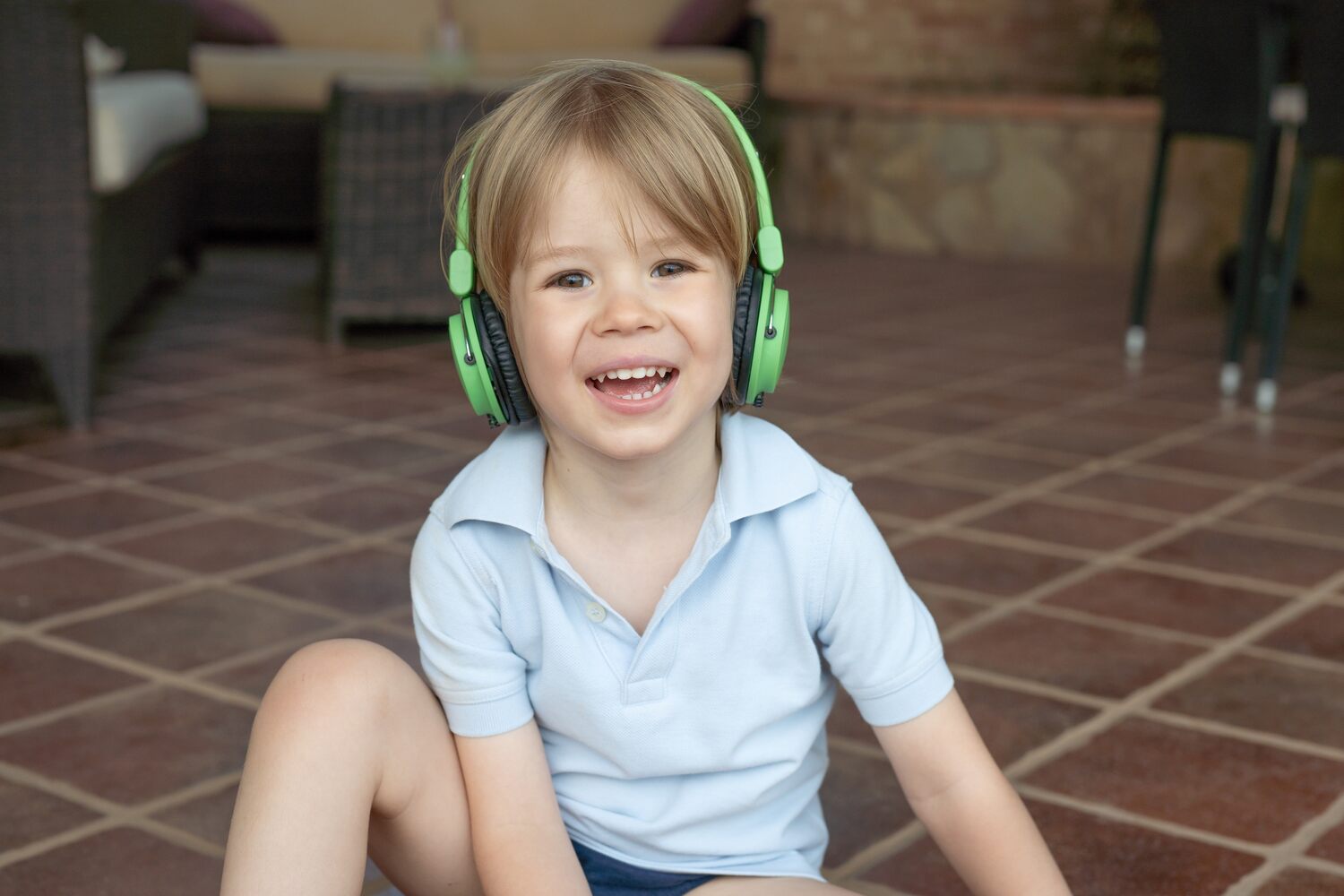
Some kids are overly sensitive to sensory stimulations. Bright lights, loud sounds, and unusual touch sensations can overwhelm them easily. This condition is commonly known as sensory processing disorder in kids. These children exhibit clumsy behavior while exposed to sensory overload and it can be unsettling for caregivers as well.
The condition can also lead to poor emotional regulation, difficulties in cognitive and motor functioning. Understanding the subtle issues of sensory processing is a must for parents, teachers, and caregivers so that tailored interventions are made possible for the affected kids.
In This Article
- What is Sensory Processing Disorder or SPD?
- Symptoms of Sensory Processing Disorder
- Causes of Sensory Processing Disorder
- How is Sensory Processing Disorder Diagnosed?
- Can Sensory Processing Disorder be Prevented or Avoided?
- Treatment Options For Sensory Processing Disorder
- Tips For Living With Sensory Processing Disorder
- FAQ’s
- References
What is Sensory Processing Disorder or SPD?

As parents, you’ve likely noticed your child’s extreme reactions to sensory stimuli that don’t affect you or others. It leaves you with so many unanswered questions as well. However, the truth lies in a neurological condition commonly known as sensory processing disorder.
It is a condition where the brain finds it challenging to receive, process, and respond to various sensory stimuli coming from the sense organs (1a). As a result, kids either become hypersensitive or hyposensitive to sensory stimuli. Individuals with SPD may struggle to interpret and utilize sensory information, resulting in a range of difficulties in their everyday activities.
Studies have revealed that sensory processing disorder is present in 5% to 13% children of 4 to 6 years of age (1b). In children, SPDs manifest extremes of behavior responses. Sensory over responsive children show ‘flight’, ‘fright-freeze’, aggression, withdrawal, and avoidance of the stimuli. However, under-responsive to sensory stimulations leads to sensory cravings.
Symptoms of Sensory Processing Disorder
Sensory processing problems can be recognized during toddlerhood. Most kids display extremes of aversion to noises, taste, or smell stimulations. They may also show odd behaviors coupled with mood fluctuations. Certain minor changes in the environment can trigger extremes of reaction.
Hypersensitive Kids – Symptoms

If the child is overly sensitive to environmental stimulations, they will show the following symptoms –
- Heightened emotional reactions like crying or throwing tantrums when feeling uncomfortable to loud noises, bright lights, or strong aroma
- Avoiding crowded places or noisy settings
- Clumsy gait
- Intense physical reactions such as covering ears, or closing eyes, and even flee away from the situation
- Irritability and meltdowns
- Agitation and hyperactive tendencies
- Lack of concentration
- May gag if food textures appear uncomfortable
- Resists hugs or touch sensations
- Avoids visiting unknown places
Hyposensitive Kids – Symptoms

When a kid displays signs of lack of sensory stimulations, they display the following symptoms –
- Seeks out sensory experiences and gets closer to bright light or loud sounds
- May skip, jump, or bang onto objects to get sensory feedback
- Shows preference for highly energetic spaces such as amusement park
- Impulsiveness and risk-taking behaviors due to reduced perception of danger
- Appearing unresponsive to sensory inputs like pain or texture
- Finger chewing or cloth biting
- Unable to sit still in one place
Causes of Sensory Processing Disorder

Sensory processing issues may impact any one or multiple senses. There is no one conclusive cause of the illness. However, researchers believe that SPD (sensory processing disorder) occurs when sensory pathways in brain are unable to process and respond appropriately to the sensory messages coming from the sense organs (2). As a result, the child appears clumsy and confused when sensory overload happens.
Kids with autism are sensitive to change in environments. This is because of sensory processing issues (3). Moreover, this neurological problem also occurs due to the presence of other neuro-psychological conditions such as autism, ADHD, etc. (4) Research also suggests that 39% to 52% of preterm babies are prone to develop sensory processing issues in early childhood (5). Other reasons cited are –
- Low birth weight
- Maternal health issues in pregnancy
- Alcohol or drug abuse during pregnancy
- Abnormal brain activity
How is Sensory Processing Disorder Diagnosed?

Sensory processing disorder is not considered as a distinct medical condition and there is no formal criteria for diagnosing the same. However, it is always associated with the presence of other neuro-psychiatric conditions such as autism, ADHD, and developmental delays in kids.
The illness can be diagnosed by a medical practitioner who will do a thorough review of the child’s physical and mental state. In most cases, clinicians use Sensory Integration and Praxis Test (SIPT) or the Sensory Processing Measure (SPM) to understand the cause-effect analysis of the disorder. Along with these procedures, doctors also assess the real-life encounters of these kids to environmental stimuli by closely interacting with parents and teachers.
Can Sensory Processing Disorder be Prevented or Avoided?
At present, there is no known methods that can prevent the occurrence of sensory processing disorder. Since the causes are still unknown, doctors can only suggest early identification and treatment options that can lower the risk of complications.
Treatment Options For Sensory Processing Disorder
Sensory issues do not have a cure. However the key remains in finding coping strategies to manage their experiences as good as possible. Some of the best known treatment options include –
1. Sensory Integration Therapy

This is a structured therapy where the child works with an occupational therapist. The aim of this technique is to help kids respond appropriately to sensory stimulations. The child is exposed to sensory stimuli slowly and their responses are monitored by the therapist, so that the child doesn’t react or respond intensely.
2. Exposing Kids to Sensory Diet

Here a personalized plan of sensory activities are created to regulate arousal levels and meet sensory needs of the kids. These activities include use of swings, brushing, touching rough surfaces etc. the responses are monitored and the child is counseled again to respond in varying acceptable ways.
3. Occupational Therapy

The therapist helps the child to confront situations that appear overwhelming due to sensory overload. It reduces the child’s avoidance response and focuses on helping children develop skills to manage sensory challenges and improve participation in daily activities.
Tips For Living With Sensory Processing Disorder

If a child is living with SPD, the aim of treatment is to lower the severity of the symptoms so that their lives become easy and comfortable. Parents can help them in the following ways-
- Relaxation exercises like yoga, mindfulness helps to calm down
- Kids can use sound-canceling headphones when exposed to loud sounds
- They can use glasses that soothes eyes when bright lights are on
- Tag-free clothes can be used by kids who are sensitive to clothing
- Avoiding the use of perfumes on clothes, or no incense sticks at home
Sensory processing disorder can cause significant challenges to young children. However, in most cases, it can be well-managed. Through tailored interventions and support, children with SPD can enhance their quality of life.
FAQ’s
1. How Can I Determine if my Child Has SPD?
You need to observe your child for sensory sensitivity in day to day life. If they’re facing difficulty, it’s important to consult a physician for proper diagnosis and treatment.
2. How Can I Help my Child Have Fun at The Playground if They Have SPD?
You can visit the playground during quiet hours and bring along their favorite toys for fun and comfort. Gradually help them touch trees and plants around or help them play with others, so that they get exposed to various sounds slowly. Support their independent play by offering breaks.
3. Can my kid Live a Normal Life With SPD?
Yes, your child can live a normal life with SPD. Use of tailor-made treatments can help your child overcome their impulsive sensory responses. Moreover, you need to understand their sensory needs and gradually introduce them to discomforting situations for gradual sensory adaptation.
4. Will SPD go Away as my Child Grows up?
SPD may improve with timely treatment for some children. However, early intervention and support from parents and teachers remain the key in managing symptoms.
References
- Passarello N, Tarantino V, Chirico A, Menghini D, Costanzo F, Sorrentino P, Fucà E, Gigliotta O, Alivernini F, Oliveri M, Lucidi F, Vicari S, Mandolesi L, Turriziani P. Sensory Processing Disorders in Children and Adolescents: Taking Stock of Assessment and Novel Therapeutic Tools. Brain Sci. 2022 Oct 31;12(11):1478. doi: 10.3390/brainsci12111478. PMID: 36358404; PMCID: PMC9688399. – https://www.ncbi.nlm.nih.gov/pmc/articles/PMC9688399/
- Lang M, du Plessis E. Sensory processing disorder: Perceptions on the clinical role of advanced psychiatric nurses. Health SA. 2019 Sep 23;24:1197. doi: 10.4102/hsag.v24i0.1197. PMID: 31934431; PMCID: PMC6917448. – https://www.ncbi.nlm.nih.gov/pmc/articles/PMC6917448/
- Neufeld J, Taylor MJ, Lundin Remnélius K, Isaksson J, Lichtenstein P, Bölte S. A co-twin-control study of altered sensory processing in autism. Autism. 2021 Jul;25(5):1422-1432. doi: 10.1177/1362361321991255. Epub 2021 Mar 1. PMID: 33645260; PMCID: PMC8264631. – https://www.ncbi.nlm.nih.gov/pmc/articles/PMC8264631/
- Ghanizadeh A. Sensory processing problems in children with ADHD, a systematic review. Psychiatry Investig. 2011 Jun;8(2):89-94. doi: 10.4306/pi.2011.8.2.89. Epub 2010 Nov 20. PMID: 21852983; PMCID: PMC3149116. – https://www.ncbi.nlm.nih.gov/pmc/articles/PMC3149116/
- Ryckman J, Hilton C, Rogers C, Pineda R. Sensory processing disorder in preterm infants during early childhood and relationships to early neurobehavior. Early Hum Dev. 2017 Oct;113:18-22. doi: 10.1016/j.earlhumdev.2017.07.012. Epub 2017 Jul 14. PMID: 28711561; PMCID: PMC5654666. – https://www.ncbi.nlm.nih.gov/pmc/articles/PMC5654666/
